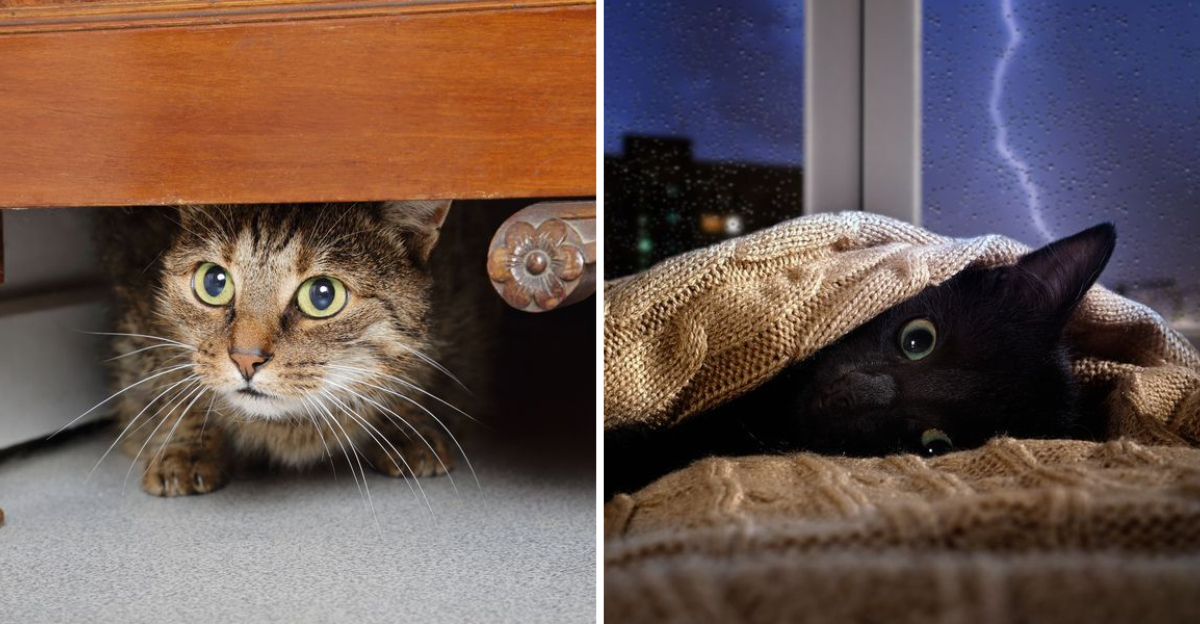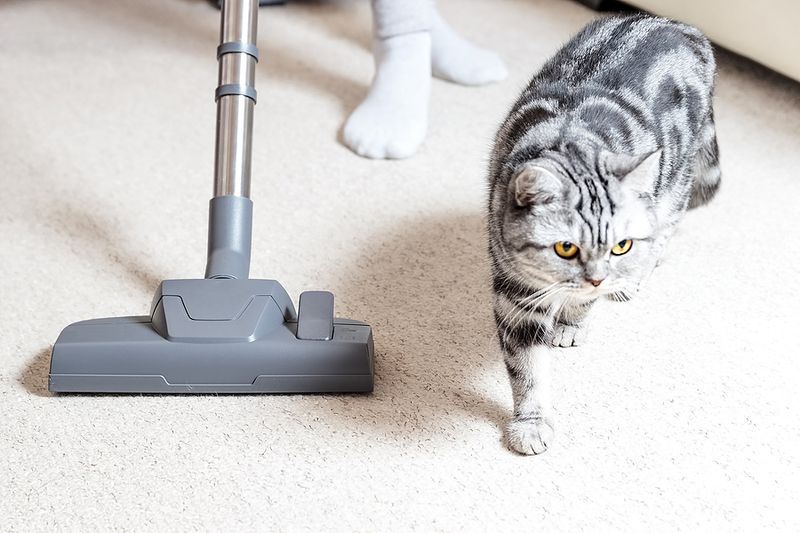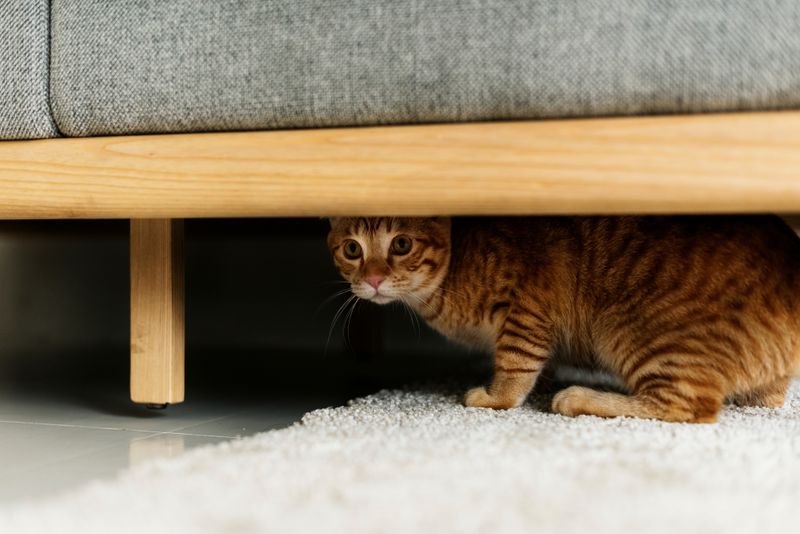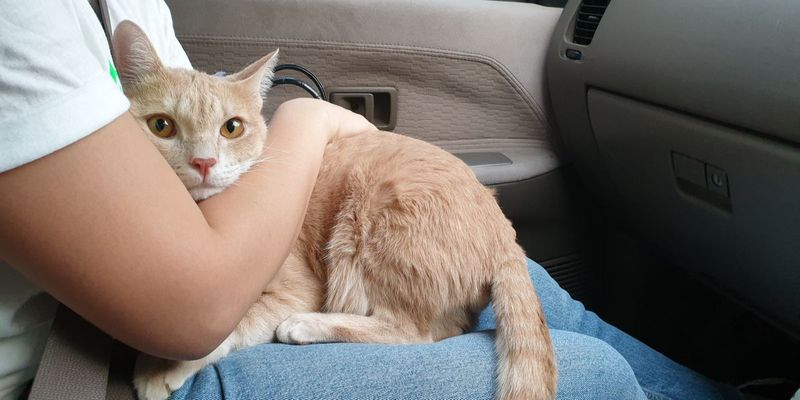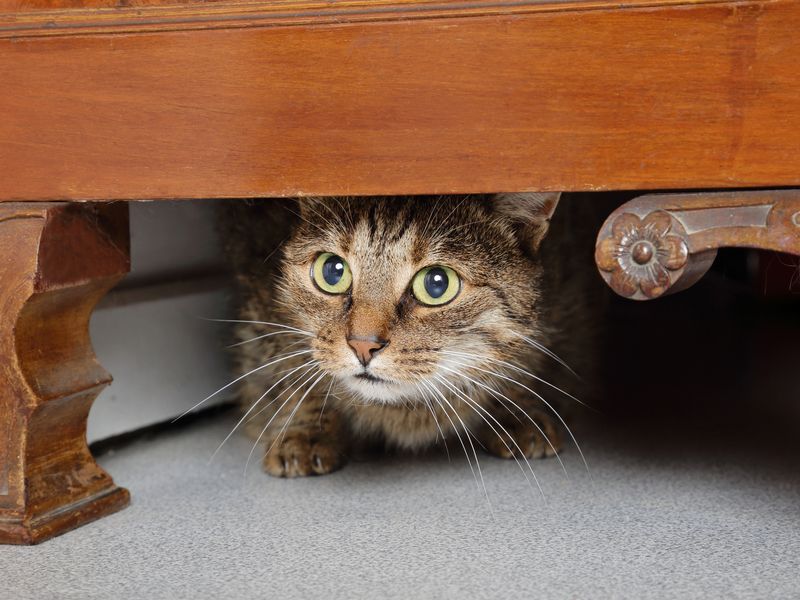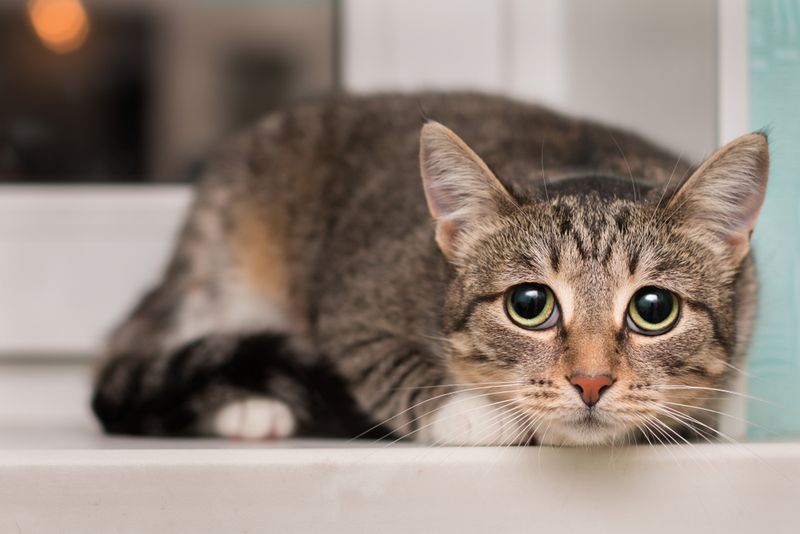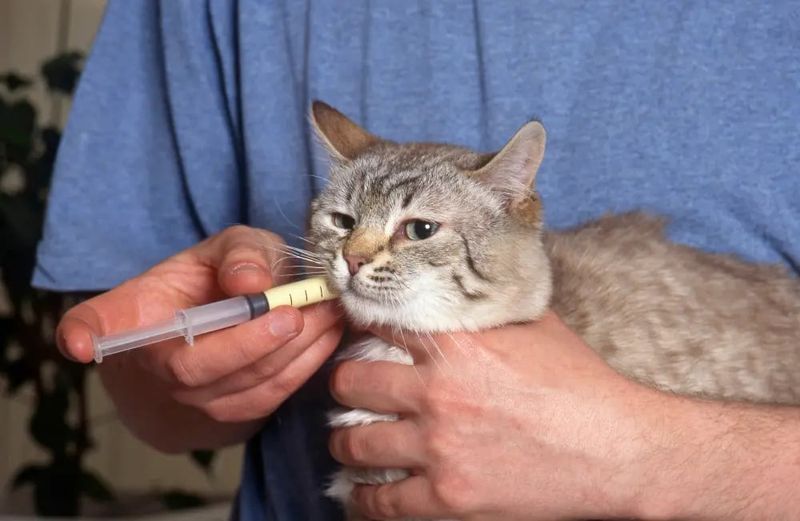📖 Table of Content:
Explore the intricacies of feline anxiety with our guide on common cat fears and practical methods to help them find comfort. Cats, with their sharp instincts and curious nature, can be easily startled by various elements in their environment. Understanding these fears, from loud noises to unfamiliar environments, is essential for nurturing a harmonious relationship with your feline friend. Accompanied by vivid imagery and helpful techniques, this article offers a comprehensive look into the world of cat fears and the steps you can take to ensure your pet feels secure and loved.
1. Thunderstorms
Did you know? Cats can actually sense changes in barometric pressure, making thunderstorms particularly terrifying for them. The loud cracks of thunder and blinding flashes of lightning can send even the bravest feline scurrying for cover. Ensuring a safe, quiet space during storms can provide much-needed solace.
Some cats find comfort in enclosed spaces like a closet or under a bed. Playing soft music or using white noise machines can help drown out the storm. Providing reassurance through soothing words or gentle petting can also help them feel more secure.
2. Vacuum Cleaners
With a roar that rivals a lion, vacuum cleaners are a common nemesis for cats. To them, it’s an unpredictable beast that invades their territory.
Gradual exposure can help ease their fears. Start by letting your cat inspect the vacuum when it’s off, rewarding their bravery with treats. Over time, they’ll associate the vacuum with positive experiences.
When vacuuming, place your cat in a separate room with their favorite toys and blankets. The noise will be less intimidating from a distance, and they’ll feel safe surrounded by familiar comforts.
3. Strangers
For many cats, strangers entering their territory can be as unsettling as an unexpected invasion. Cats thrive on familiarity, and unfamiliar scents and sounds can make them anxious.
Allowing your cat to approach new people at their own pace is key. Encourage visitors to sit quietly and let the cat come to them, offering treats as a peace offering.
Cats often feel safer when they have a high vantage point, so providing access to elevated spaces can help them observe from a distance until they feel more comfortable.
4. Car Rides
For cats, car rides are rarely associated with good experiences. Often, it means a trip to the vet or an unfamiliar place. The motion, noise, and unfamiliar smells can be extremely stressful.
To help ease their anxiety, start with short, calm drives, paired with plenty of comforting words and treats. Familiarizing them with the carrier at home can also reduce stress.
Covering the carrier with a breathable fabric can help minimize visual stimuli, creating a cozy, den-like environment that feels safe and secure.
5. Loud Noises
Cats have incredibly sensitive hearing, making them particularly prone to being startled by loud noises. From fireworks to construction sounds, these disruptive roars can send cats into hiding.
Creating a quiet, safe haven with familiar blankets and toys can offer relief. White noise machines can help muffle the jarring sounds from outside.
Over time, gradual desensitization—such as playing recordings of the noise at low volumes—can help them adjust. Combining this with rewards for calm behavior can make dealing with loud noises more manageable for your feline companion.
6. New Environments
When introduced to new environments, cats can feel overwhelmed by the plethora of unfamiliar scents and sights. Their natural curiosity is often tempered by wariness.
To help your cat settle in, start by confining them to a single room with everything they need—food, water, litter box. Gradually introduce them to other areas of the house once they seem comfortable.
Allowing them to investigate at their own pace, without pressure, will help them feel secure. Offering treats and praise for calm exploration can further reinforce their confidence in the new surroundings.
7. Vet Visits
Vet visits are a necessary but often dreaded part of a cat’s life. The strange smells, unusual handling, and presence of other animals can be overwhelming.
To ease their fear, try acclimating your cat to their carrier before appointments. Include familiar items like a favorite blanket or toy.
Using calming pheromone sprays in the carrier can reduce anxiety. Additionally, visiting the vet for non-medical reasons, like just to say hello, can help them associate the place with positive experiences. Rewards and gentle reassurances during and after the visit can also help alleviate their stress.
8. Other Pets
Introducing a cat to other pets can be akin to orchestrating a peace treaty. Cats, being territorial creatures, often view new four-legged housemates as intruders.
Start introductions slowly, using scent swapping and gradual face-to-face meetings. Supervised interactions where both animals can retreat to their safe spaces if needed are crucial.
Providing equal affection and attention can help ease jealousy and territorial disputes. Over time, with patient efforts, a bond can form between them, turning initial apprehension into companionship, or at least mutual tolerance.
9. Being Alone
Though often portrayed as independent, many cats can suffer from separation anxiety. Loneliness can manifest in destructive behavior or excessive vocalization.
Creating a stimulating environment with toys, climbing structures, and views of the outdoors can alleviate boredom. Interactive feeders and puzzle toys can keep their minds occupied.
Leaving behind a piece of clothing with your scent can provide comfort. Gradually increasing the time spent apart can help them adjust to being alone, ensuring they’re content in their own company until you return home.
10. Being Picked Up
Not all cats appreciate being picked up. For some, it’s a loss of control and a vulnerable position. Understanding and respecting your cat’s boundaries is key.
Start by gently handling them, allowing them to get used to being touched. Rewarding them with treats when they’re calm can encourage acceptance.
Respect their signals and always keep pick-up sessions short and pleasant. With patience and positive reinforcement, your cat may grow more comfortable with being held, though it’s important to acknowledge that some cats will always prefer four paws on the ground.
11. Bath Time
For most cats, bath time is synonymous with torture. Their dislike for water is well-known, but sometimes a bath is necessary.
Ensuring the water is lukewarm and the environment is calm can make the experience less traumatic. Having everything ready beforehand and using gentle, cat-specific shampoo helps.
After the bath, thoroughly drying them and offering a treat can make the ordeal more bearable. Gradual exposure to water through play can also help desensitize them, turning bath time from a dreaded task into a tolerable, if not enjoyable, activity.
12. Sudden Movements
Cats are vigilant creatures, ever-ready to react to sudden movements. Their evolutionary instincts tell them to flee from potential threats.
Avoid making abrupt gestures around your cat. Slow, deliberate movements are less likely to alarm them.
Engaging them in play where they can chase and pounce on toys helps them channel their prey instincts positively. Over time, they learn to differentiate between harmless actions and potential threats, reducing their stress in response to sudden movements.
13. Fireworks
Fireworks can be a nightmare for cats. The loud bangs and bright flashes are terrifying and impossible to escape from.
Creating a safe haven where your cat can retreat during fireworks is crucial. This could be a quiet room with soft furnishings to absorb sound.
Playing calming music or using white noise machines can help mask the noise. Offering comforting items like their favorite blanket and toys provides reassurance. Gradual exposure to similar sounds at a low volume can help desensitize them, making future fireworks less distressing.
14. Unfamiliar Scents
Cats rely heavily on scent to understand their world. Unfamiliar scents can be unsettling, signaling something new and potentially threatening.
Introducing new items gradually and allowing your cat to investigate at their own pace is best. Offering treats as positive reinforcement for exploring new scents can help them associate these experiences with good things.
Using familiar scents, like a favorite blanket, near the new item can also make the introduction smoother. This allows the cat to sense safety even in the presence of new smells.
15. Children
Though children are often eager to interact, they can be unpredictable for cats. Sudden movements and loud voices can be overwhelming.
Teaching children to approach cats calmly and to respect their space is essential in fostering a positive relationship. Supervised interactions with gentle play teach both parties how to coexist peacefully.
Ensuring the cat has an escape route if they feel overwhelmed helps them feel more secure. Over time, with patient and respectful interactions, cats can form bonds with children, learning to trust their smaller human companions.
16. Medical Treatments
Administering medication to a cat can be a daunting task. Most react with suspicion to anything unfamiliar, especially if it tastes unpleasant.
Using pill pockets or disguising medication in tasty treats can increase acceptance. For liquid medicines, using a syringe to gently administer along their cheek ensures they swallow it without too much fuss.
Patience, gentle handling, and rewards for cooperation go a long way in making medical treatments less traumatic. Over time, cats learn to trust the routine, knowing it’s a temporary discomfort followed by something positive.
